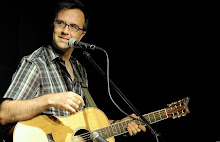A couple of hours later, my fingers are still burning after working on
this exercise for about 20 minutes. While I've preached the importance of in-tune string bending and regular bending practice to students, I've always favoured jazz and classical-style playing in my own practice regimen, such as it is. At a recent rock/blues trio gig I was disappointed at my intonation while executing whole-step bends. Thus my renewed quest to improve this aspect of my playing.
The author of the exercise claims that out-of-tune bending is a dead giveaway that a player is inexperienced. I admit that I judge other guitarists on the intonation of their bends, along with vibrato control and control of the portamento rate. I'm lapsing into synth talk here - in another life I owned a Yamaha DX7 and actually made a serious effort to learn how to program it. I never really succeeded in being able to program the thing but I did learn a lot about sound in the process. For example, a sliding pitch that moves smoothly from one point to another is called portamento. This term is often confused with glissando, which a quick movement through a portion of the chromatic scale. It's the difference between bending a string and sliding along the frets from point to point. I'd like to find or create another bending exercise that trains in bending at different, controllable time durations. I'd like to be able to choose different rates for expressive purposes the way someone like Eric Clapton does and did. After a little bit of YouTube searching here's a
video that touches on bend durations. He gets into it at around the 10:30 mark, but it's really just more of an encourage to be aware that you can use different durations for different effects. He doesn't provide any exercises or even any attempt at classification, as he does earlier in the video for bend types.
Here's a
less demanding version of the exercise by Justin Sandercoe. The search results for "guitar string bending lesson" indicate that this is a popular topic. If you have a favourite video on this topic, please let me know and I'll post it.














